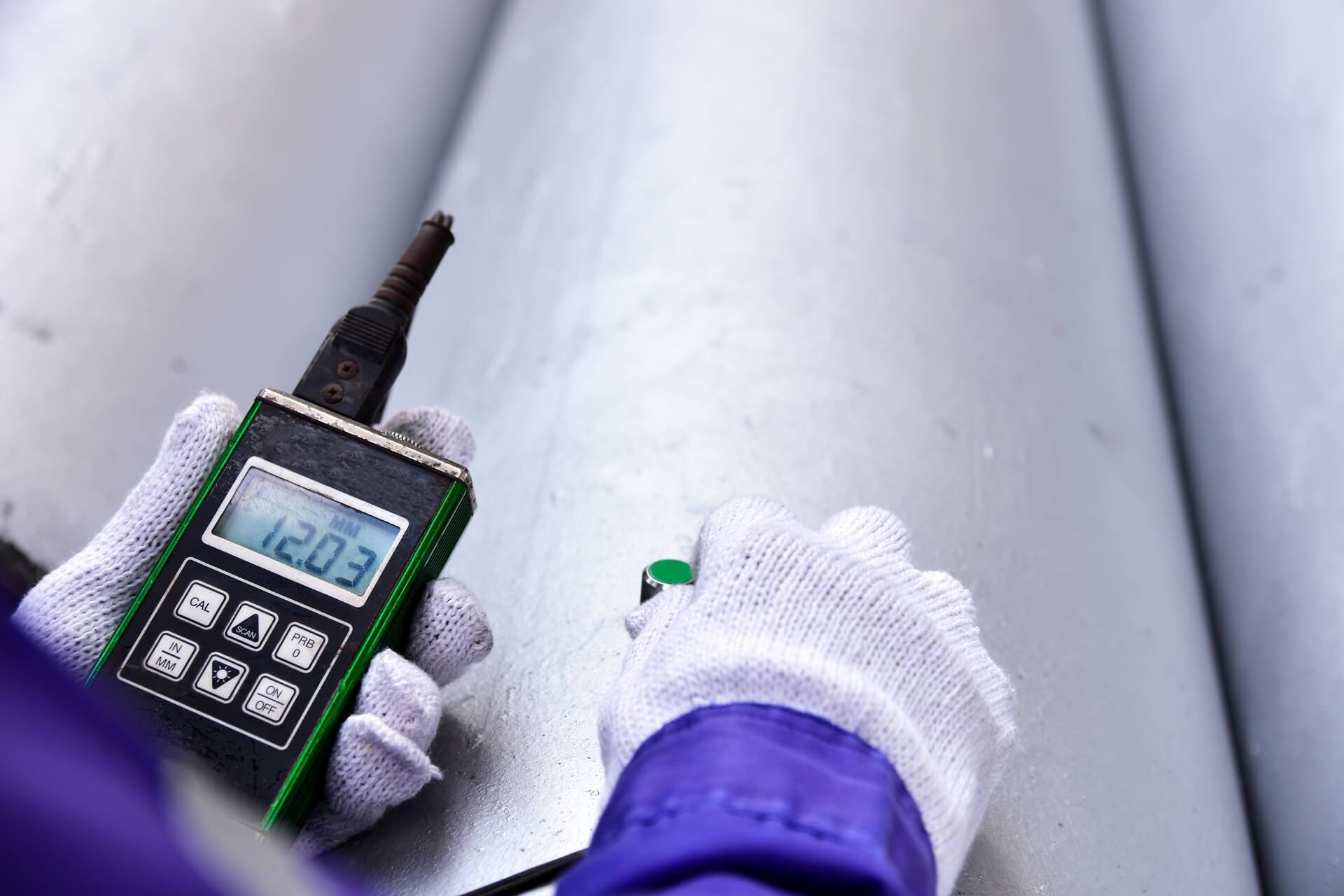


Get to know us better! Download our company profile to explore our expertise, services, and success stories. Stay informed about how we can add value to your business.

Ultrasonic Thickness Gauging (UTG) is a non-destructive testing technique used to measure the thickness of materials, typically metals, but also plastics, composites, and other materials. It works by sending high-frequency sound waves (ultrasonic waves) into the material and measuring the time it takes for the sound waves to travel through the material and reflect back from the opposite surface.
A transducer probe is placed on one side of the material, and a couplant (often a gel or oil) is applied to ensure good acoustic coupling between the probe and the material surface.
The probe generates ultrasonic pulses, which travel through the material. When the ultrasonic waves encounter a change in material density (such as the back surface of the material), they are partially reflected back to the probe. The time it takes for the ultrasonic waves to travel to the back surface and back to the probe is recorded.
Using the known velocity of sound in the material and the time-of-flight measurement, the thickness of the material is calculated. The measured thickness is displayed on the instrument's screen, and it may also be recorded for documentation purposes.
UTG is commonly used in various industries, including manufacturing, construction, oil and gas, and aerospace, to assess the integrity of structural components, pipelines, pressure vessels, storage tanks, and other equipment. It is a valuable tool for detecting thinning or corrosion in materials and helps ensure the safety and reliability of critical infrastructure. UTG is particularly useful for inspecting materials that are difficult to access or inspect visually.